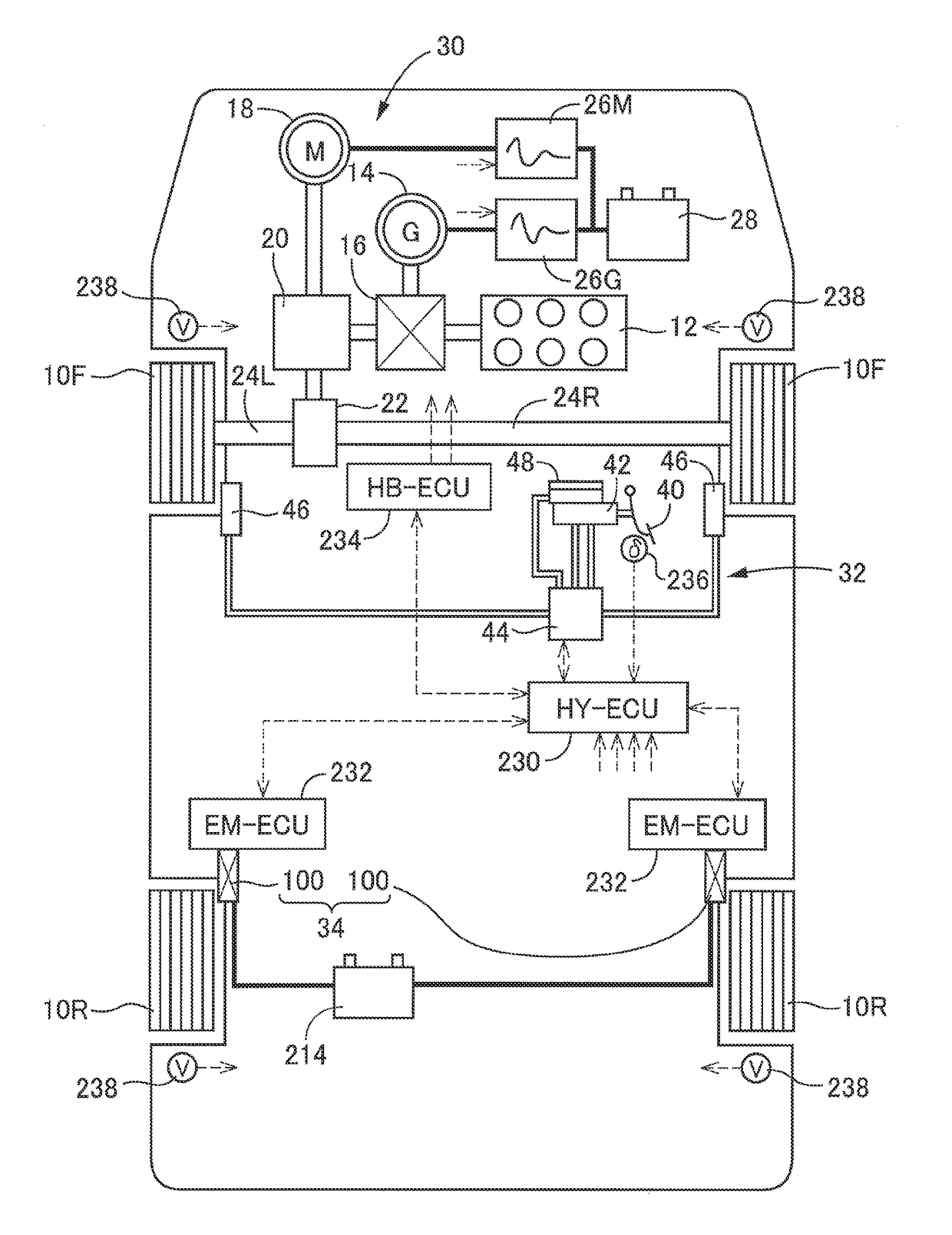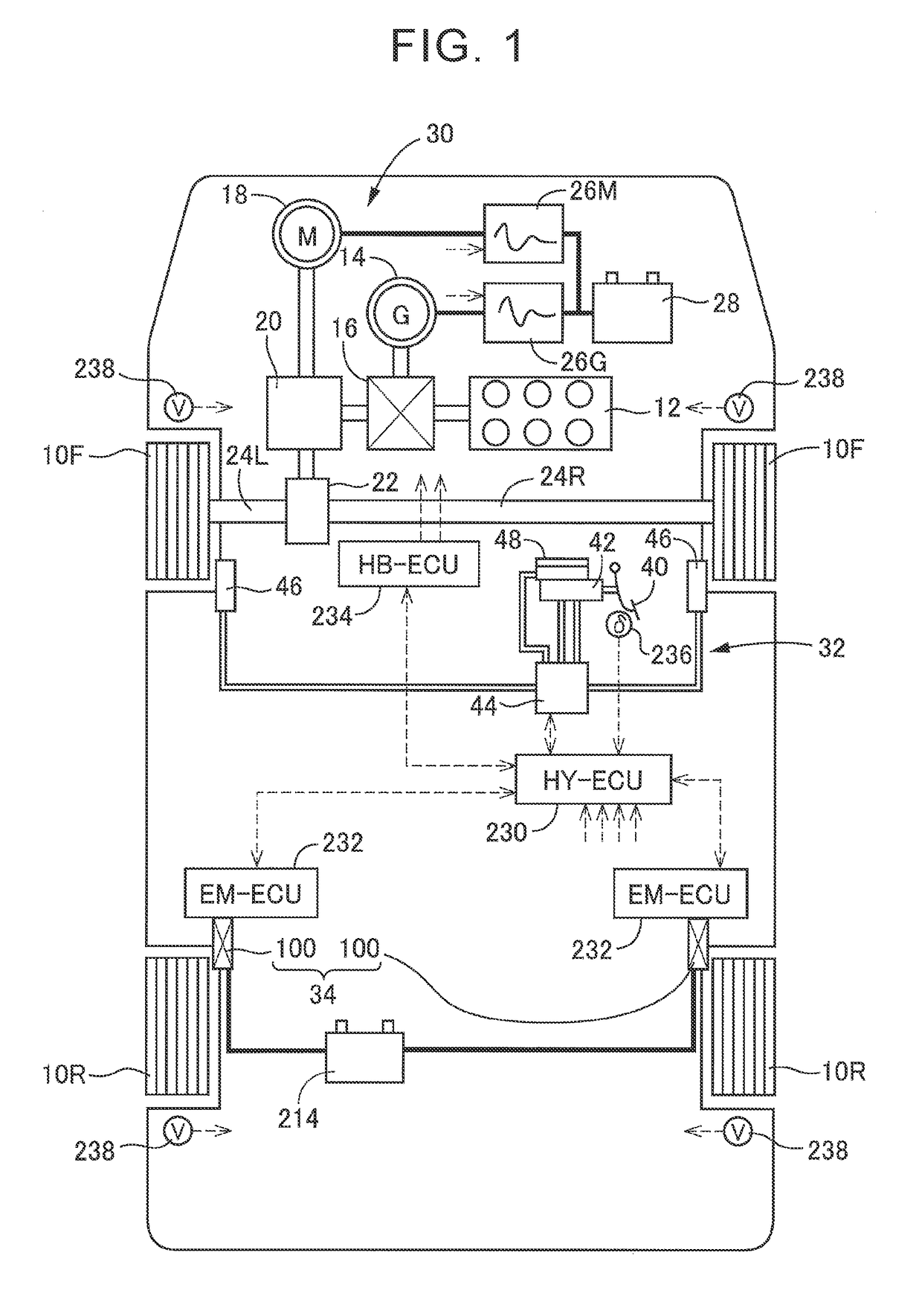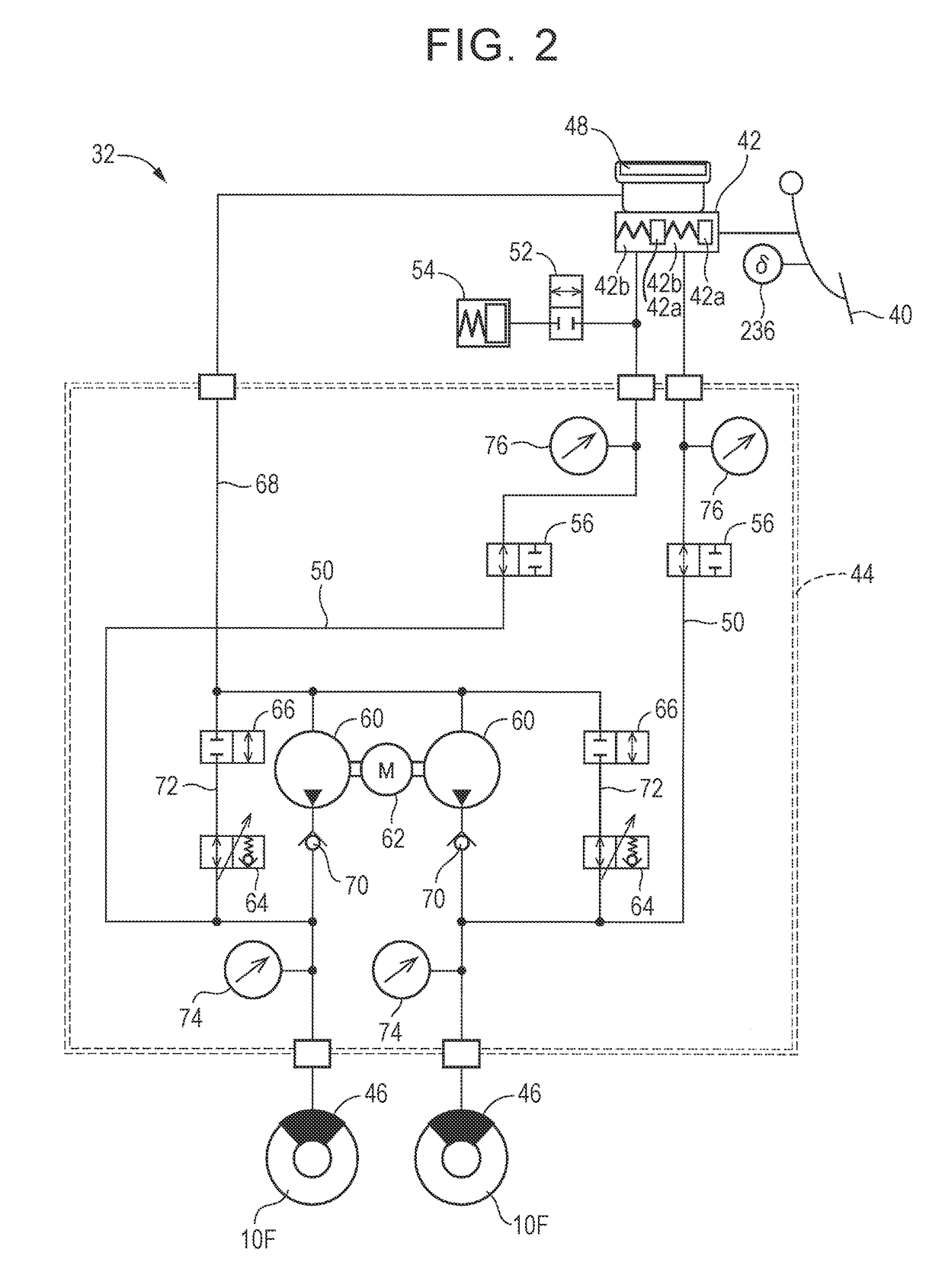Vehicle braking system
a technology for braking systems and vehicles, applied in braking systems, braking components, transportation and packaging, etc., can solve problems such as large request of braking force to the whole vehicle, complicated control, and undesirable to maintain a uniform electric braking for
- Summary
- Abstract
- Description
- Claims
- Application Information
AI Technical Summary
Benefits of technology
Problems solved by technology
Method used
Image
Examples
Embodiment Construction
[0058]The following describes details of a vehicle braking system according to an embodiment as a mode for carrying out the present disclosure with reference to the drawings, and also describes modifications of the vehicle braking system. Note that the present disclosure can be performed in various modes including various alterations and modifications made based on knowledge of a person skilled in the art, in addition to the modes described in SUMMARY as well as the following embodiment and modifications.
[0059][A] Summary of Vehicle Drive System and Vehicle Braking System
[0060]A vehicle provided with a vehicle braking system of the embodiment is a hybrid vehicle including two front wheels 10F and two rear wheels 10R, as schematically illustrated in FIG. 1, and the two front wheels 10F serve as driving wheels. First described is a vehicle drive system. The vehicle drive system provided in the vehicle includes an engine 12 as a drive source, a generator 14 mainly functioning as an ele...
PUM
 Login to View More
Login to View More Abstract
Description
Claims
Application Information
 Login to View More
Login to View More - R&D
- Intellectual Property
- Life Sciences
- Materials
- Tech Scout
- Unparalleled Data Quality
- Higher Quality Content
- 60% Fewer Hallucinations
Browse by: Latest US Patents, China's latest patents, Technical Efficacy Thesaurus, Application Domain, Technology Topic, Popular Technical Reports.
© 2025 PatSnap. All rights reserved.Legal|Privacy policy|Modern Slavery Act Transparency Statement|Sitemap|About US| Contact US: help@patsnap.com



